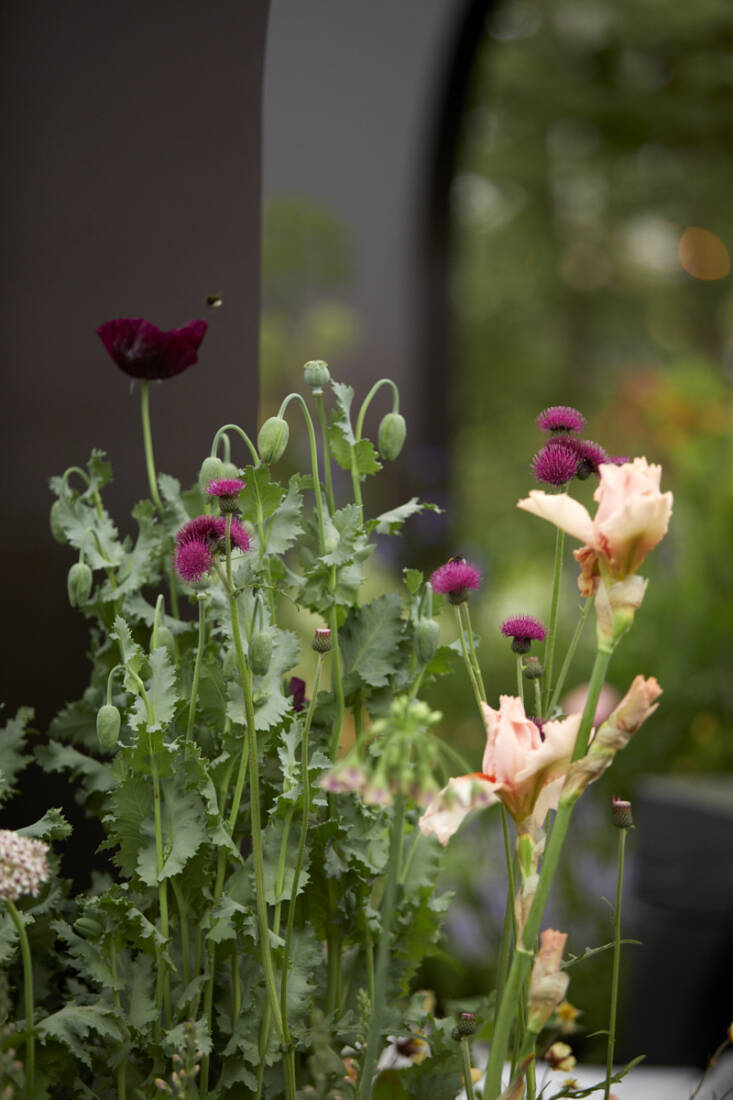There were some changes afoot at this year’s Chelsea Flower Show, with several gardens representing charities, often small and little known, doing excellent work in the much-needed sector of horticultural therapy. They were able to showcase their causes through garden design because the cost has been borne by a pair of anonymous altruists calling themselves Project Giving Back. PGB has pledged to sponsor 42 gardens over three years as a way of aiming the show’s searchlight on the important work that these charities do.
Instead of expending a lot of energy on securing corporate funding and all the obligations that that entails, talented designers have simply been paired with a charity of their choice. Which is where we come in, looking for gardens that resonate, whether on a stylistic, horticultural or emotional level—and realizing that the latter improves when there’s a deeper understanding of why the garden is at Chelsea in the first place. As for style and horticulture, they make a joyous combination in the “Mothers for Mothers” garden in the Great Pavilion designed by Pollyanna Wilkinson, a project that is refreshingly readable in this year of green on green.
Photography by Britt Willoughby Dyer.

Against dark chocolate brown panels, which would be made of rusted Corten steel if this were out in the elements, gleefully pink and ruffly flowers are shown to their best advantage. Foliage also sings against this color, giving clarity to leaf shapes.

Iris ‘Wondrous’ is a stand out. Apart from Baptisia ‘Pink Truffles’ and ‘Dark Chocolate’, showy plants are displayed as multiples of single cultivars, increasing their impact. “I wanted a very feminine and joyous flower, and bearded irises in this color palette make me smile,” explains Pollyanna. “Same with the rose ‘Lark Ascending’ (see below). It’s a lovely sherbet-y rose that smells amazing and just keeps on flowering.”

The planting and hardscaping ideas in this garden (including a smooth, black bench of charred ash) are eminently translatable into a town setting. In fact, the whole garden has a future urban home in the southwestern city of Bristol; it will become a garden for respite and community (and gardening), as part of the horticultural therapy offered by Mothers for Mothers.

“The panels are a play on the idea of being at home alone with a baby,” explains Pollyanna. “From my own experience, it can sometimes feel like a nest, and at other times very isolating. That’s where the arches come from: they are extruding the walls of a box.”

Pollyanna was paired with the small charity Mothers for Mothers after they’d both coincidentally registered an interest with PGB in working with one another on a show garden. Before training in garden design, Pollyanna was a counselor, volunteering to help mothers suffering from peri-natal mental illness. The section of the garden shown here is the end of a color gradation, from blue, green, and white (“denoting low mood”) to a leap towards hope (and many shades of exuberant pink), signifying the point where someone asks for help.

The garden in this area delights in its peachiness; even the peony was supposed to be a maximum peach ‘Callie’s Memory’, an Itoh peony that was swapped out for ‘Lady Anna’. Last-minute plant changes can be advantageous at the show and the bluer shade of pink used here is steadying, while not compromising on shape. The plants are mainly from Form, with peonies from Primrose Hall and irises from Iris of Sissinghurst.

“The poppies work really well in tying it all together, giving a depth of color,” notes Pollyana. “I love them with the dark, chocolate brown panels.”













Have a Question or Comment About This Post?
Join the conversation (0)